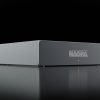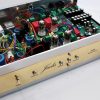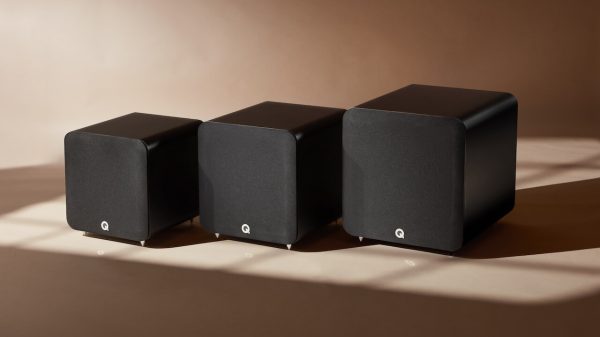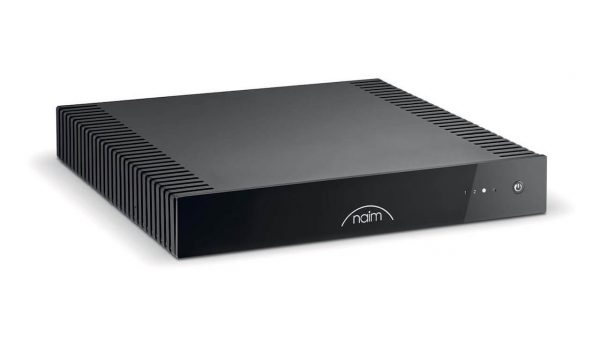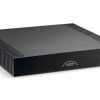The more I listen to products like the Naim NAIT 50 — the greater the desire to push back against products that offer something for everyone with far too many connectivity options and features that one will never use.
The home theater industry went through that for over a decade delivering AVRs with endless rows of buttons and formats, and rear panels that look more like the Death Star’s controls than consumer A/V products.
Listening to music should not require a manual left open on the credenza for those moments when you can’t figure out how to just get the damn thing to play.
Putting aside my strong affection for the Naim Uniti Atom and Cambridge Evo 150 which I think are the two best options in the network amplifier category, they also require an online connection 24-7 to deliver their most important feature — hi-res streaming.
Internet outages like the kind that crippled access for millions of Canadian consumers in the summer of 2022 are admittedly rare but they do happen.
The music streaming platforms are not immune to outages either.
For many listeners, streaming is not actually part of the deal.
That might sound crazy to most of you, but I know more than a few who only listen to vinyl, CDs, and reel-to-reel and only require an integrated amplifier with a few inputs and a phono section.

For those that require streaming, the NAIT 50 offers a solitary DIN input (you will need an RCA to DIN cable) for your external network player.
The Cambridge Audio MXN10 worked perfectly fine with it.
Some will call the NAIT 50 a dinosaur; a product that is out of step with the times and only for audiophile purists stuck in the past.
The truth is that there is no perfect one-size fits all solution for any of us and how you decide to enjoy music is the correct path for yourself.
I do recommend that you tune out those who tell you that you need $30,000 amplifiers and $6,000 phono cartridges to “experience” music the way that the artist intended.
Anyone with a grain of integrity knows that pushing that nonsense without pause reeks of bullshit.
The high-end press made that its raison d’etre for over four decades.
You can read my detailed review of the Naim NAIT 50 here.

25 watts per channel into 8 ohms from the internal class AB amplifier, and we’re happy to see that Naim has designed a new MM phono preamp and headphone amplifier for the NAIT 50.
The output increases to 40 watts into 4 ohms which is more than enough for the type of loudspeakers that will be paired with the amplifier.
The $3,599 USD asking price will raise some eyebrows considering the price of the aforementioned Naim Uniti Atom Streaming Amplifier ($3,799) that delivers everything but the history, phono section, and vintage vibe of the NAIT 50.
So why select the NAIT 50 as my “Editor’s Choice” for 2023 in the amplifier category?
When you hear that snap for the first time and the energy that this amplifier can infuse your music with, it makes complete sense.
There is no pretense or ridiculous level of detail.
Compared to the Uniti Atom, the NAIT 50 trades in some midrange warmth and thickness in the bass range for a far superior degree of clarity and pacing.
If you prefer darker sounding loudspeakers with a more polite sounding treble, this amplifier will illuminate your listening experience and do so without apology.
Music has a pulse and a system has to convey it to connect the dots.
If your loudspeaker preferences include Q Acoustics, Spendor (older models), Graham, Harbeth, Wharfedale, KEF, or Tannoy — the Naim NAIT 50 must be on your audition list.
The phono section is very quiet and worked really well with the Goldring Eroica HX, Grado Timbre Opus3, Ortofon 2M Black, and Dynavector 10×5.
The power output is more than sufficient for loudspeakers from all of the aforementioned brands as long as your listening room is not cavernous.

Listening to my older Wharfedale 10.1 loudspeakers with the NAIT 50 in my den (16′ x 13′ x 9′) at even conservative volume levels keeps my attention on the music well past midnight and that’s what a system is supposed to do.
None of your audiophile friends will be impressed by its diminutive size or lack of features — but don’t be surprised when you discover that they secretly ordered one for themselves.
Where to buy: $3,599 at Audio Advice
Continue reading more Editor’s Choice Awards for 2023.






